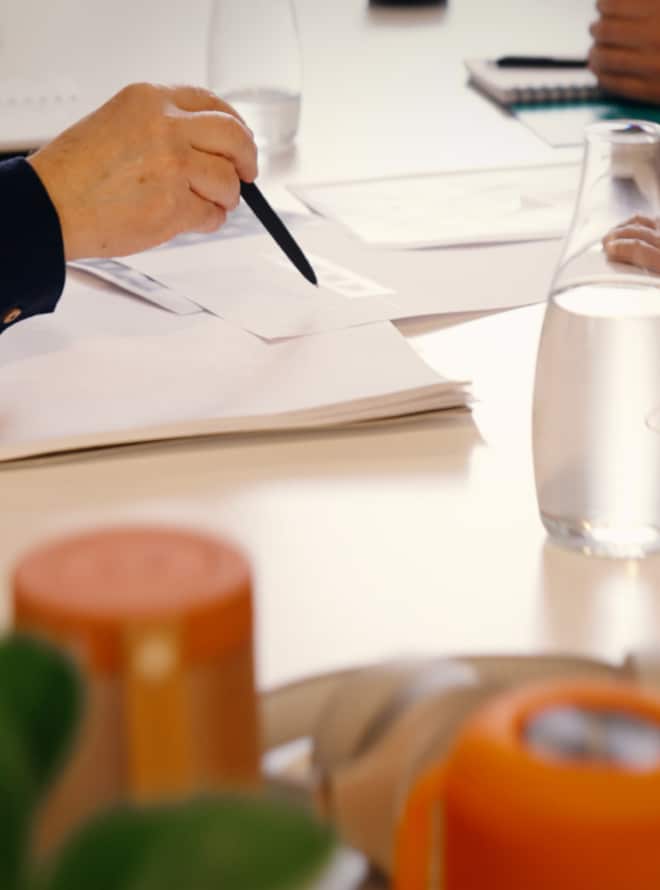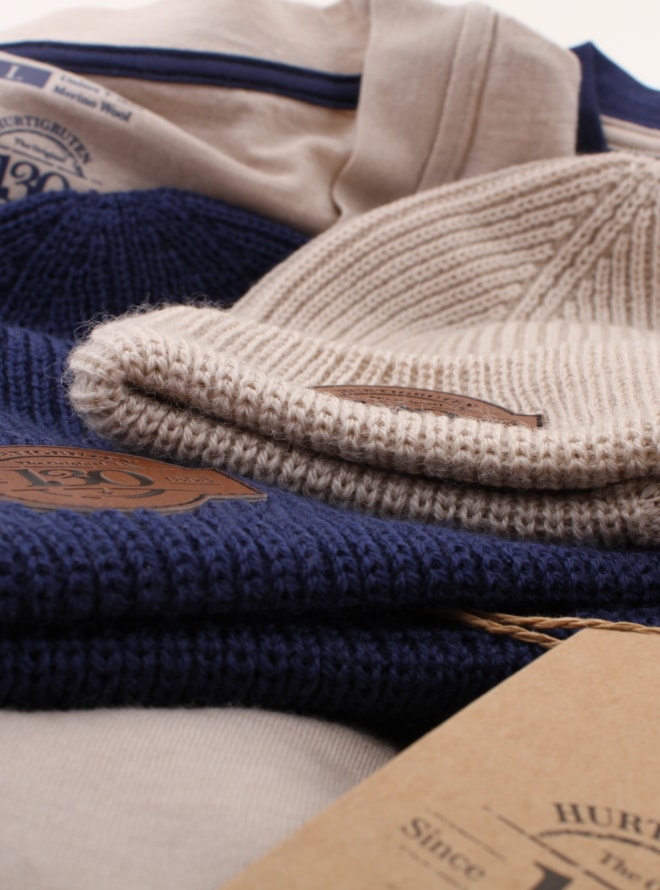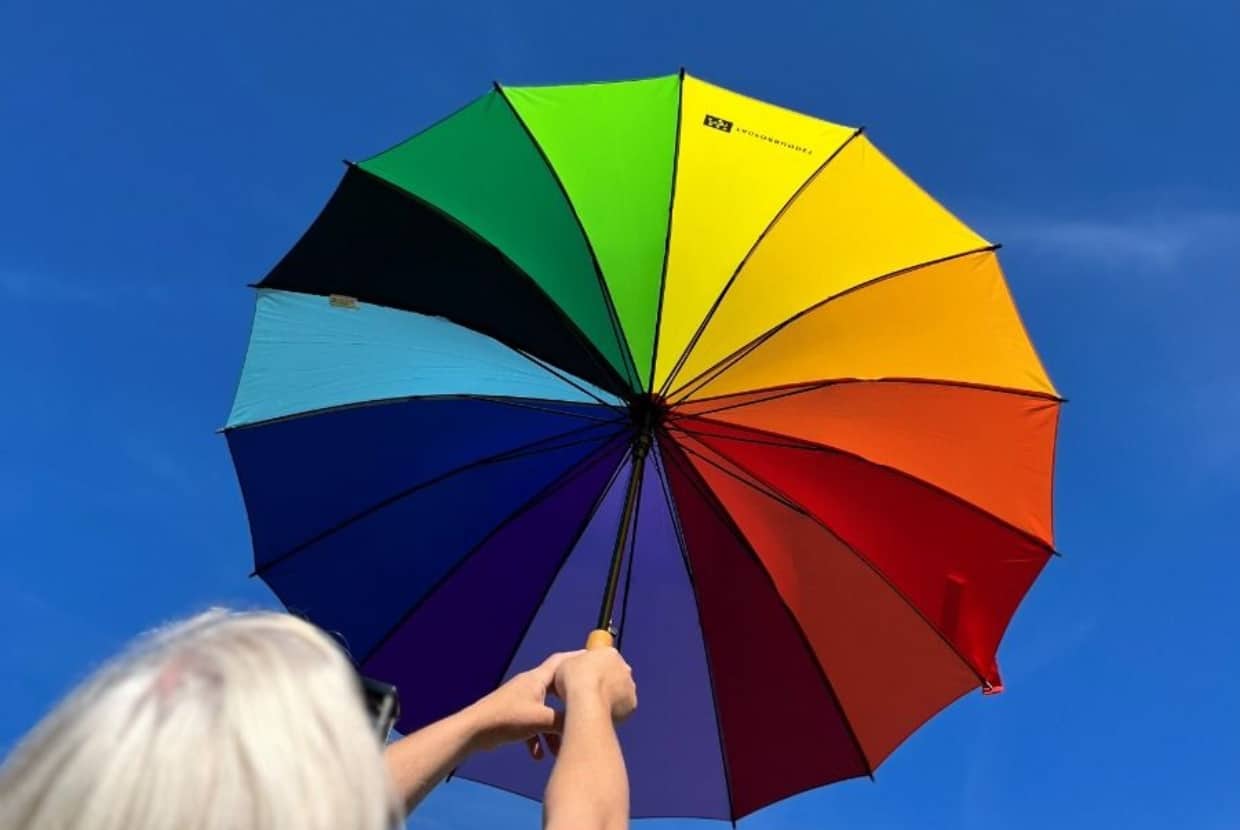FAQ
Do you have questions?
Artisti provides products and services that safeguard and promote the name and brand of our clients. You may have questions about logos, branding, design and issues like the tax regulations that apply to corporate gifts. Here we try to provide you with some of the answers.
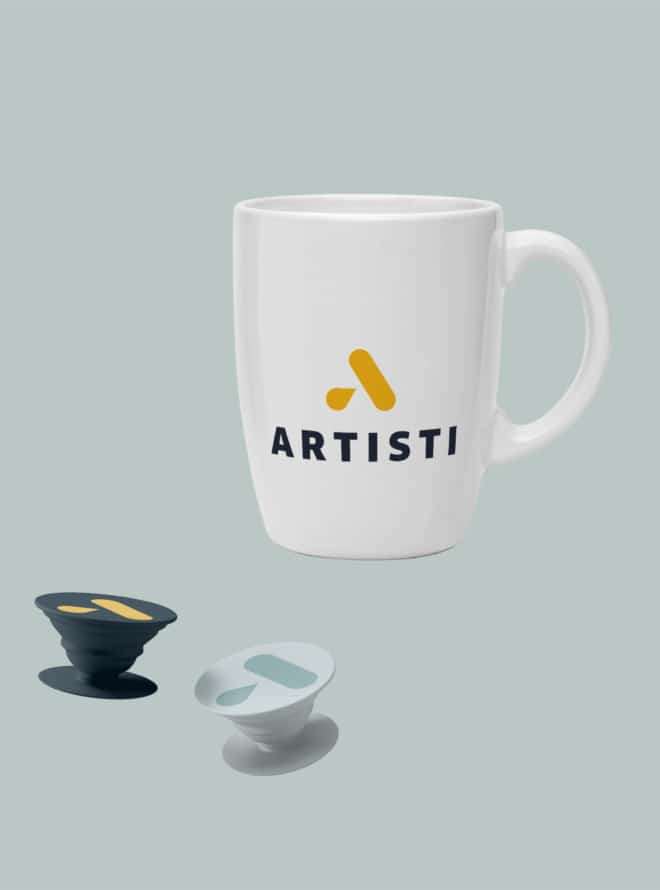
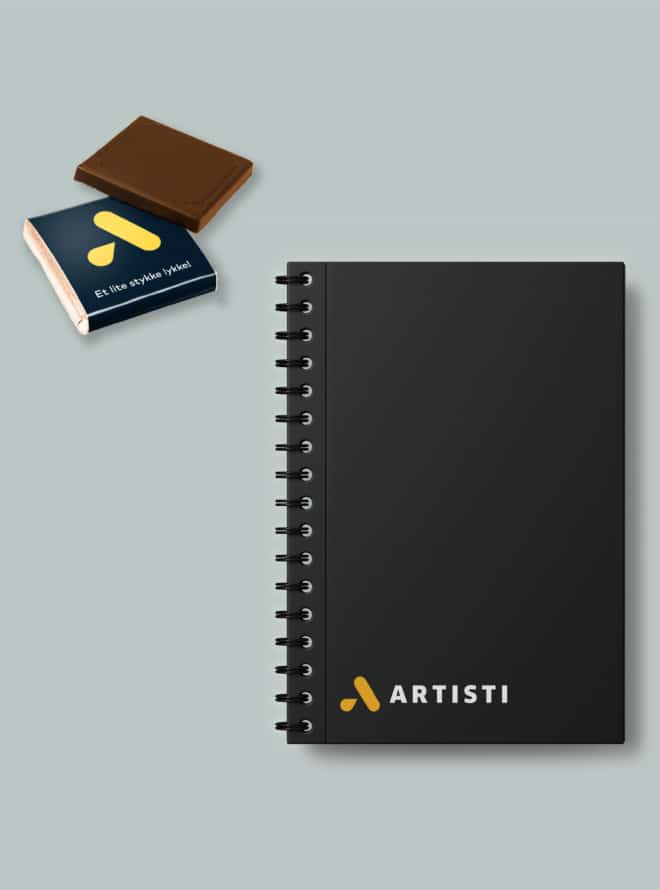
Logos/printing methods
What is screen printing?
In screen printing, a finely meshed cloth of silk or nylon is stretched on a frame. The cloth is prepared so that it has open and closed sections. Only the open sections let the printing ink through. The motif is built up in layers by printing one colour at a time. The distinctive feature of screen printing is dense and even colour surfaces. Screen printing is best suited to one-layer garments such as t-shirts, shopping bags and jumpers. For small editions where cost-effectiveness is a priority, fewer printing colours or using transfer printing is recommended. A frame is made per printing colour and these are set on top of each other.
What is transfer printing?
This printing method has the same structure as screen printing, but, instead of the motif being printed directly on the product, it is printed on a carrier. After the printing ink is applied to the carrier, glue is applied to the wet ink before it undergoes a drying process. Once the glue has hardened, the logo can be applied to almost any product using a heat press that provides heat under constant pressure for a few seconds. The glue in the logo is activated, and the logo affixes to the substrate. Transfer printing is suitable for caps, bags, t-shirts and jackets and is the most affordable option for small print runs.
What is pad printing?
Pad printing is the printing of hard products that takes place with the help of a silicone pad that picks up colours from a cliché plate into which the logo is burned. First, a negative original is made which transfers the printing ink onto the silicone pad, which is then pressed onto the product. This must be done for each colour, so if a two-colour logo is involved, this must be built up in two rounds. Pad printing gives an attractive, accurate and durable result and is a printing method that is very suitable for everything from ballpoint pens to power banks and other hard advertising items such as ice scrapers, lunch boxes, bottles and sweets packaging etc.
What is circular printing?
A great method to achieve bigger prints (compared to pad printing). This method is becoming more and more popular on e.g. wine bottles as Christmas gifts in the branding industry and is highly sought after by microbreweries – as it provides an exclusive look. Circular printing is suitable for round, even products such as mugs, thermal cups, bottles and thermos flasks.
What is sublimation?
Sublimation is a printing technique that uses a sublimation printer on sublimation paper. The motif is printed onto the desired motif. This method achieves excellent full colour prints with e.g. photographs. Both soft and hard materials such as textiles, aluminium, ceramics etc. can be sublimated. It is only possible to print on synthetic materials. Textiles must contain at least 60% polyester. The more polyester, the better the result. Hard materials such as ceramics and metal must be treated with a special surface layer of polymer to allow adhesion. This technique cannot be used for ordinary cups and glasses. Coloured polyester can also be used, but the best results will then be with black prints. Optimum results are achieved on products specifically designed for sublimation printing. A heat press is always required as the ink must be converted to gas and transferred to the product. Effective, correct pressure is essential, in addition to a temperature of approx. 200°. Sublimation is suitable for sports competition vests, headovers, photographs on cups and exercise t-shirts.
What is laser engraving?
Engraving uses a laser to burn the logo onto the product. On painted objects, the top layer is removed so that logos/texts appear in the colour of the material. On bare metal, an extra strong laser is used – the result will usually be a dark grey or a lighter shade in the metal. This method is suitable for materials such as glass, signage and wood. Engraving gives a traditional and classic look and offers extended durability.
What is embroidery?
Embroidery is a textile technique where large machines with needle and thread are used to sew onto cloth or other soft fabric. Embroidery is performed directly on a garment following an embroidery card that is produced on the basis of the required logo. Up to 15 thread colours can be embroidered at the same time. A thread colour will be selected as close to the logo colours as possible. Threads are available in different finishes, thicknesses and gloss. Embroidery is extremely durable and in some cases lasts longer than the garment itself.
What are patches?
Woven badges, embroidered badges or imitation leather badges are different varieties of patches that can be made in different shapes and sizes. Different alternatives for application on the product are available, e.g. self-adhesive backing or with transfer glue backing that is heated. Alternatively, they can be sewn onto the product.
What is embossing?
With embossing, a cliché plate is made of the logo that is used to emboss the products. The method is widely used on leather, hide, paper and fleece.
Design
What is a vectorised logo?
A vectorised logo uses mathematical formulas and vectors instead of pixels to describe the information. Vectorised logos have the advantage of being scalable without loss of quality. Whether the logo is required on a small ballpoint pen or on large advertising signage, it can easily be adjusted in size without becoming blurred or pixelated. Another advantage of vectorised logos is that they can easily be edited and customised. Colours, sizes and shapes can be changed and text added without compromising the quality of the logo. This makes it possible to update and adapt logos as needed without having to create a completely new version. Vectorised logos are often found in file formats such as .eps, .ai or .pdf.
What is a Pantone colour?
Pantone colour refers to a colour system used worldwide to standardise and accurately identify colours. Pantone colours are assigned a unique code that makes identifying and replicating colours across different printing methods and materials very easy. The Pantone colour system is particularly popular in design, graphics, printing and production of items such as logos, packaging, clothing and more. Pantone colours ensure that consistency and accuracy in colour reproduction can be achieved. In short, Pantone colours are a standardised system for identifying and using colours precisely and reliably.
Tax limits
What are the tax rules on gifts for employees?
The tax-free gift limit for employees (e.g. Christmas gifts, summer gifts etc.) is NOK 5,000 per year. This is conditional on the gift consisting of something other than monetary value. Gifts up to a value of NOK 5,000 per year are tax-free for the recipient. The employer can deduct this amount. If the value of the gift is more than NOK 5,000 for the year, the excess amount will be taxable. Other tax-free amounts apply to gifts for anniversaries etc. For weddings, retirement, termination of employment after at least ten years, round birthdays (50, 60, 70 or 80) or if the company has existed for 25 years (or a number of years divisible by 25), a tax-free limit of NOK 4,000 applies. If an employee has worked for a company for at least 20 years, and every ten years thereafter, a gift with a value of up to NOK 8,000 is allowable.
What are the tax rules on giveaways and gifts for business associates?
Gifts for business associates are not, as a general rule, deductible. This applies to both tax and VAT. In order for the gift to be tax-free for the recipient, a limit of NOK 297 per gift applies. These gifts will be tax deductible for the business. The gift must be designed to include advertising and have been produced in large quantities. Company branding and/or company name must be permanently attached to the gift.
Sustainability
What does Artisti do?
Artisti has been a member of Ethical Trade Norway since 2008. We are ISO certified in Quality Management Systems (NS-EN ISO 9001:2015) and Environmental Management Systems (NS-EN ISO 14001:2015) and have Platinum status from EcoVadis for our sustainability work. We report annually on our work on due diligence assessments to Ethical Trade Norway, and the assessments from EcoVadis are performed every year in September. Through our ISO certifications, we cover 12 of 17 of UN's Sustainability Development Goals. We have seven prioritised SDGs as these are areas in which we can have the biggest impact. We comply with the Ten Principles of the UN Global Compact for responsible business. Our policies and reports are publicly available on our website.
Are branded products sustainable?
Sustainability is a term used to characterise economic, social, institutional and environmental aspects of human societies. A product does not become less sustainable because it has a company logo on it, but it is important that the product itself fulfils a function and meets a need. For example, a good jacket that you wear every day at work to keep warm will be needed irrespective of whether it is branded or not. Having said that, product sustainability is a complex topic with many elements that can be changed in order for the product to be as sustainable as possible. Firstly, it is important to have a partner who has control over and sets requirements for manufacturers and the supply chain in terms of impact on people, the environment and society. The partner should also act as an advisor on the jungle of products available – on what is environmentally friendly, but also on identifying the right product for the right target group. In addition to fulfilling a function and meeting a need, the product must also be of such a quality that it is cared for and used by its recipients. The product should be of good quality with a long life and of a type that can be reused time and time again. The choice of materials also plays a role. An excellent selection of natural renewable raw materials, such as bamboo, cork, paper, wood etc., is available. Products made from recycled material, such as recycled plastic, cardboard, cotton etc., help to reduce CO2e footprints. Using products that have travelled a short distance, choosing the most environmentally friendly transport methods and ensuring that products are produced in factories that use renewable energy as a power source can also reduce CO2e. It is important to think about the product’s entire life cycle as well as about the ability to recycle or reuse the product. As an experienced supplier, we will always guide our clients to make the best choices so that the impact on people, the environment and society is reduced as far as possible in all processes.
Delivery times
How long are your lead times?
Delivery times vary from one day to four months. We offer products from our own warehouse or from sub-suppliers in the local area with a very short delivery time. Products customised in a factory in China with shipping to Norway take longer. Get in touch and we will be able to help you identify the best solution for your needs and your delivery deadlines.
